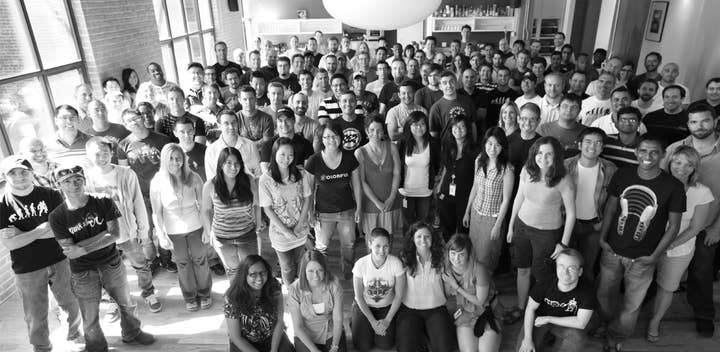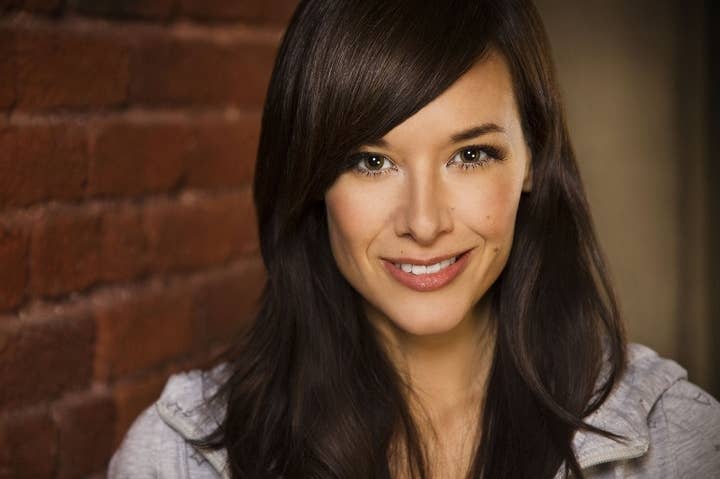How to build a AAA studio
Jade Raymond on taking Ubisoft Toronto's headcount from 0 to 300 while making Splinter Cell: Blacklist in three years
Since Ubisoft Toronto's official launch in September of 2010, managing director Jade Raymond has built the operation up to a team of more than 300 developers, a selection process that would have involved combing through roughly 30,000 CVs and 1,800 interviews. At the same time as it was being built, Ubisoft Toronto was in turn building its debut project, Splinter Cell: Blacklist, on which Raymond served as executive producer. The game launched last month, and while Raymond told GamesIndustry International that the idea of a new studio tackling a AAA title for its first project in such a short time frame was "kind of unique" in the gaming industry, she still wishes she'd set her ambitions a little bit higher.
"You could think it's kind of crazy to decide you're going to set up a new studio and ship a AAA within three years, and I'm definitely really proud of that," Raymond said. "Ultimately though, from a gamer's perspective, no one cares if you're a new studio or not. When you're a gamer buying Blacklist, you don't care. And in terms of long-term tech investment for the studio, I guess I wish we'd bitten the bullet and also were going to ship this on next-gen, that we'd bitten the bullet and done a bigger tech investment."

Of course, given the abundance of readily available next-gen tech and experience elsewhere in the Ubisoft studio system, Ubisoft Toronto isn't exactly hamstrung heading into future projects. And it's not as if building a studio from scratch to 300 employees while completing work as lead developer on a AAA game in the same three-year stretch is such a common thing that she had a template to follow. But Raymond said the decision to attempt that was a strategic one shaped by Ubisoft's agreement with the government of Ontario, which gave the publisher tax breaks based on a commitment to build Ubisoft Toronto to an 800-job studio with 10 years.
"So when you look at that kind of agreement, when you know from the start that you're building a skyscraper, the only way you can do that and sustain that kind of growth is to have a really sound foundation," Raymond said. "So the people you get in the door in those first few years are really key, because you need to have really solid industry veterans so that you can recruit people at that pace, ramp them up, get them trained and working effectively."
Raymond brought some of that foundation with her from Ubisoft Montreal, but she had to attract the rest. And to do that, Raymond figured the key would be having a great project for them to work on.
"Having a mandate to ship a AAA and the fact that we were leading it from the start was a key strategy to allow me to attract the right people..."
Jade Raymond
"A lot of the senior people we were able to attract because it's interesting to them to come and be part of a founding team and build up a culture from scratch, but they wouldn't have done it at the expense of doing a project they didn't really care about," Raymond said. "Having a mandate to ship a AAA and the fact that we were leading it from the start was a key strategy to allow me to attract the right people to build the foundation we needed to sustain the growth."
As development ramped up, Raymond found that while the project and potential of the studio were important, they weren't Ubisoft Toronto's biggest asset when it came to enticing developers to sign up.
"This is one thing where my assumptions were not quite right," Raymond said. "I thought when we were trying to attract talent, the number one thing would be the project we were able to offer them and the potential of the studio. Actually what we found was when we were able to attract the best talent, it was mostly about the team they were going to get to work with. A lot of those people who were on the fence and had multiple job offers ultimately made the choice to come here based on the face-to-face interviews with other members of the team and feeling like this was the right team they wanted to work with."
Offering people a team they wanted to work with wasn't just about personalities that got along well. It was about knowing they could get the job done.

"I often say when you're trying to make something new that's fun, it's like trying to tell a joke for the first time," Raymond said. "You don't know if it's going to be funny, ultimately, so there are some things that don't work out and you have to rework it. That whole process under tight timelines, new tech challenges, and new people, it means that development is tough. And that's the real takeaway. Ultimately, when you are working on these games and it is a labor of passion for everyone. Yes, you care about the project, but what you care about even more after you've shipped a few games is the people you're shipping it with. Can you count on them? How well is the project going to be run? Is there a level of professionalism? Will my contributions count? Will this project get out the door and not last 10 years?"
From the start, Raymond and the founding team wanted to shape a culture of transparency at Ubisoft Toronto. They wanted the studio to be completely open, not just in the floor plan or managers having open-door policies, but in how decisions--and the logic behind them--were disseminated to the entire team. They also stressed "collaborative growth," learning from the experiences of people who came from other studios with their own best practices, taking the best aspects of their previous studios' cultures and incorporating them at Ubisoft Toronto.
"Yes, you care about the project, but what you care about even more after you've shipped a few games is the people you're shipping it with. Can you count on them? How well is the project going to be run?"
Jade Raymond
Of course, when you're trying to build a studio of 800 people, not every new hire can be a 20-year veteran of the industry. But the value of a developer to the studio can't be sufficiently measured by number of games shipped or years of experience.
"You see that they have that passion for games and they're really excited and the potential is there," Raymond said. "So even though they're not bringing experience to the team, they bring extra excitement, new perspectives, maybe more insight into the gamer we're trying to target because us old fogeys who've been making games for 20 years aren't necessarily in line with the target market for our game."
With the studio's foundation laid and its first game out the door, one might think the hard part is over. But there are still about 500 more jobs to create, and possibly more. Outside of meeting Ubisoft's obligations to Ontario, Raymond said there's no target size for Ubisoft Toronto, and no cap in place. To give some idea of how big such an operation can get, Ubisoft Montreal currently employs about 2,000 people. Right now the studio is working on Blacklist post-launch content, has five new projects (including at least one new intellectual property) starting up, and the Splinter Cell brand stewardship is only going to get more complicated as work on the feature film adaptation starring Tom Hardy ramps up.
"It's gotten crazier," Raymond said. "I wouldn't have thought it would, but I guess this is always the way it goes. You always think the stuff you're in is The Big One and once you're past it, it will be smoother sailing."

